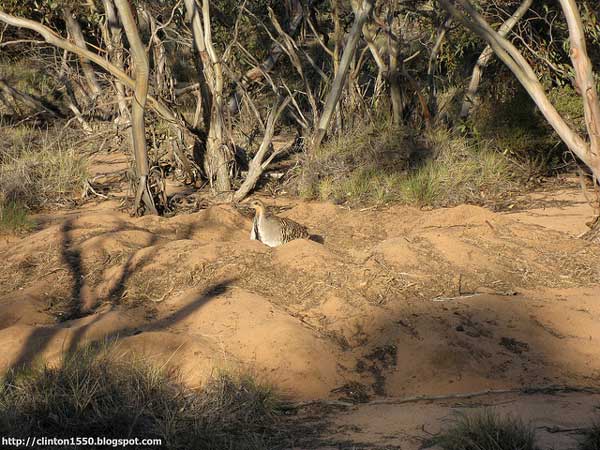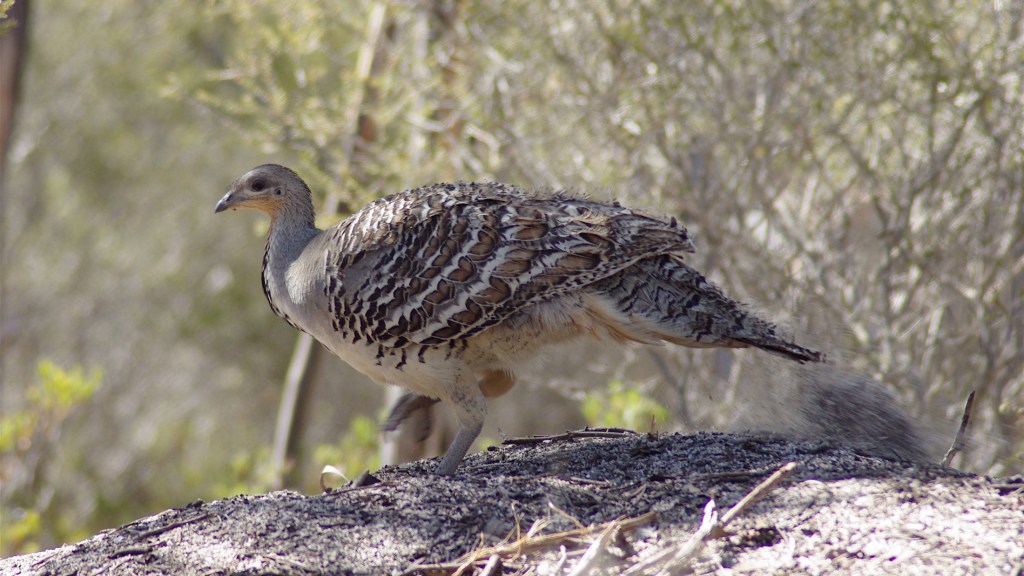What is the Victorian Malleefowl Recovery Group?
Ever heard of a malleefowl? You’ll never forget it after reading this Citizen Science Tuesday.
First, malleefowl are from the order Megapodes, which means “big feet” in ancient Greek (check them out!). They leave tracks 10-12 cm (4-5 in) long, not bad for a bird that’s roughly the size of a duck or chicken.
Second, they use those feet in the service of devoted parenting — moving tons of earth a day, all for the sake of their kids.
“Malleefowl are very special birds, because of the way they ‘scratch a living’ from a harsh semi-arid environment, by working almost all year round to tend their huge soil nests,” says Ross Macfarlane, Secretary of the Victorian Malleefowl Recovery Group (VMRG).
“They work their nest mounds for 10 to 11 months per year,” Macfarlane explains, “digging them out in autumn, and scraping trails of leaf litter from hundreds of meters around in winter, to create the compost that will heat the nests and incubate the 12 to 30 eggs in spring and summer.
“The birds tend the nests daily, shifting about 3 tons of soil each day to maintain the nests at a constant 34oC (93oF),” he adds.
Third: Baby malleefowl are superprecocial. That means they are extremely mature on the day they hatch, which gives the chicks an edge over potential predators.
According to Macfarlane: “The chicks hatch, dig out of the nest fully feathered, and can fly within 24 hours, completely without parental care.” Like Athena springing fully formed from Zeus’ head.
The VMRG works to ensure the future survival of the malleefowl through a monitoring program run by citizen scientists that tracks the abundance of breeding birds.
Why is Malleefowl Recovery Important?
The IUCN lists malleefowl’s status as Vulnerable and they are locally endangered or extinct in many regions of Australia.
They are threatened by habitat loss and fragmentation caused by land clearing, grazing and wildfire.
Populations may also be influenced by predation from introduced predators like foxes and cats as well as predation by native predators like dingoes and raptors.

In 2007, Australia’s Department for Environment and Heritage created a National Recovery Plan for Malleefowl. The goal is to secure existing populations of malleefowl across their range so that the birds can be delisted by the IUCN. But how will conservationists know if they’re succeeding?
That’s why the monitoring data provided by the VMRG and others like them is so important. In early years they provided a baseline for the status of malleefowl populations. Now they are checking to see when, where and why populations increase or decline.
“Our group has been very successful at harnessing volunteer support to maintain the malleefowl research project for approaching 15 years, helping like-minded groups in other parts of Australia to set up similar monitoring programs, and winning support from government, research organisations and private companies to support malleefowl conservation and research,” says Macfarlane.
Conserving malleefowl also benefits other wildlife that share their habitat.
“People who may not usually seem sympathetic to conservation causes often have a ‘soft spot’ for malleefowl,” Macfarlane explains.
“So they’re important not just because of their intrinsic value, but because by protecting the bushland that the birds need to survive, we also help other, less charismatic organisms.”
How Can You Get Involved in Malleefowl Recovery?
If you live in the area and would like to volunteer, the VMRG is holding its annual training in Wyperfeld National Park on October 11-12, 2014.
This training is required for all prospective monitors and includes fieldwork requirements, safety in the bush, and the use of technology.
VMRG volunteers submit their data to the National Malleefowl Monitoring Database.
Don’t live in the area? You can still help.
The VMRG accepts donations to support implementing new research including adaptive management, fox control, and motion-capture cameras.
Is there a citizen science project that you think deserves more attention? Contact Lisa Feldkamp, lfeldkamp[at]tnc.org or leave a comment below with a link to make a recommendation for Citizen Science Tuesday.




Join the Discussion
1 comment